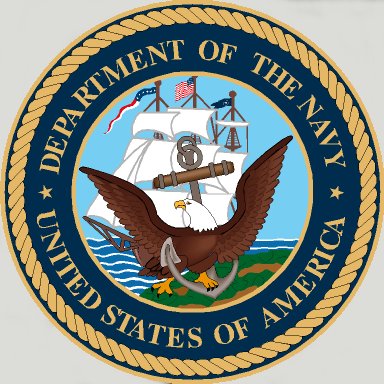Click on thumbnail
for full size image |
Size |
Image Description |
Source |

1217300701 |
94k |
At the Norfolk Navy Yard, Virginia, on 1 September 1917, the day her name was changed from Neckar and five days before she was placed in commission
U.S. Navy photo NH 57624 |
Naval Historical Center |
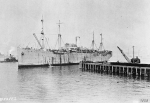
1217300710 |
128k |
Imperial War Museum photo © IWM(Q 58244) from American First World War Official Exchange Collection |
Mike Green |
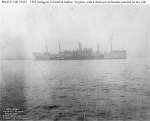
1217300702 |
104k |
In the Norfolk harbor, Virginia, on 29 November 1917. A destroyer silhouette is painted on her side to give the illusion that she is being closely convoyed. A tug is passing by the after part of the destroyer silhouette.
Donation of Mr. Marshall Butt, Norfolk Naval Shipyard Museum.
U.S. Navy photo NH 57625 |
Naval Historical Center |
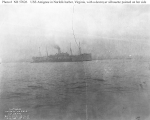
1217300703 |
91k |
In the Norfolk harbor, Virginia, on 29 November 1917. A destroyer silhouette is painted on her side to give the illusion that she is being closely convoyed. A tug is passing by the after part of the destroyer silhouette.
Donation of Mr. Marshall Butt, Norfolk Naval Shipyard Museum.
U.S. Navy photo NH 57626 |
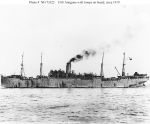
1217300704 |
81k |
Underway with troops on board, probably in 1919.
Photographed by O.W. Waterman, Hampton, Virginia.
Courtesy of R.W. Cunningham, 1971.
U.S. Navy photo NH 73322 |

1217300705 |
87k |
In harbor, circa 1919.
Courtesy of Donald M. McPherson, 1972.
U.S. Navy photo NH 76008 |
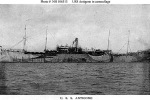
1217300706 |
128k |
Halftone reproduction of a photograph showing the ship painted in World War I "dazzle" camouflage, circa 1918
Courtesy of Charles R. Haberlein, Jr., 2008.
Naval History and Heritage Command photo NH 106313 |
Robert Hurst |
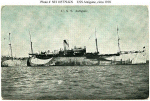
1217300707 |
177k |
Two color-tinted post cards, featuring a photograph of the ship in "dazzle" camouflage, circa 1918.
Courtesy of Charles R. Haberlein, Jr., 2008.
Naval History and Heritage Command photos NH 105779-KN and NH 105780-KN |
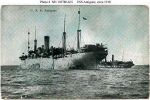
1217300708 |
178k |

1217300709 |
110k |
At St. Nazaire, France, circa early 1919 still carrying her guns.
Donation of Dr. Mark Kulikowski, 2007.
Naval History and Heritage Command photo NH 104950 |

1217300711 |
90k |
Two RPPCs of abandon ship drill aboard Antigone, circa 1918. |
Dave Wright |

1217300712 |
75k |
